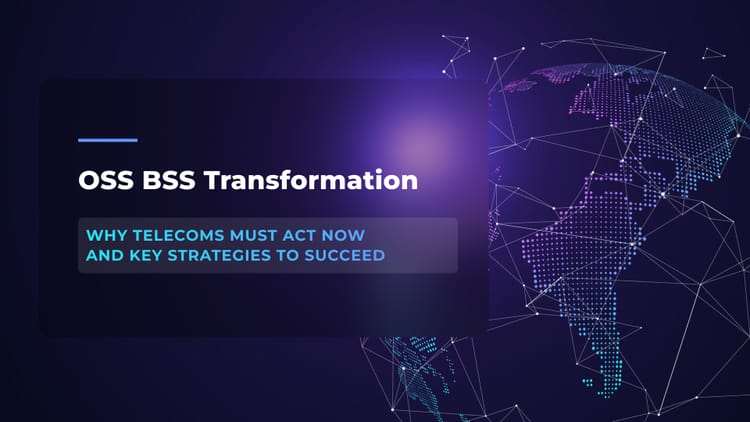6 Telecom Industry Trends to Look After in 2024

The telecommunications industry is currently like a speeding rollercoaster. It's changing faster than ever, thanks to mind-blowing breakthroughs in digital tech and customers’ growing hunger for quicker, more reliable, and super flexible communication services.
Telecom companies have to keep up or they risk getting left in the dust. If they don't hop on board with new trends and tech pronto, they could wave goodbye to their market share, watch competitors shoot past them, and totally miss out on some fruitful opportunities.
At Flyaps, we've been assisting telecommunications companies in adopting modern technologies and strategies for over a decade. We recognize that each company is unique, so blindly following all new telecommunications industry trends is a wrong strategy. But there are certain critical trends that could set your company back for years to come when not followed.
In this article, we picked six key telecommunications industry trends and provided real-life examples of how their implementation helped telecom service providers enhance their business operations. So, let’s jump right in with the first trend!
Cloud computing
Telecom cloud is a cloud computing environment tailored specifically for the needs of telecom companies. Telcos can store, process, and manage their data and services in the cloud, which includes functions like managing phone calls, text messages, internet data, and more. Thanks to hybrid cloud for telecom, companies can achieve top-notch security for sensitive customer data combined with cost-effectiveness and flexibility for less confidential information.
According to Gartner, by 2025, more than 95% of new digital workloads will be on the cloud, which is a huge leap forward compared to only 30% in 2021. Even though telcos have been a bit careful about migrating to cloud, some of them have already successfully embraced this telecom industry trend. Deutsche Telekom, for example, cut down the number of their data centers from 89 to just 13 using AWS and Azure cloud services. With this approach, they made their computers and storage work about 25% faster.
Now, let’s look at an example of our client, Yaana Technologies, and how they became a leader in the European market by moving their outdated system to the cloud.
Case in point: gaining leadership in Europe by transitioning from the outdated desktop system to a more advanced cloud-powered platform
Yaana Technologies, headquartered in California, is a well-known global provider of innovative business intelligence (BI) solutions for various domains, including cybersecurity and telecommunications. Telcos turn to Yaana's advanced software and services to optimize network performance, elevate customer experiences, and ensure compliance with governmental regulations.
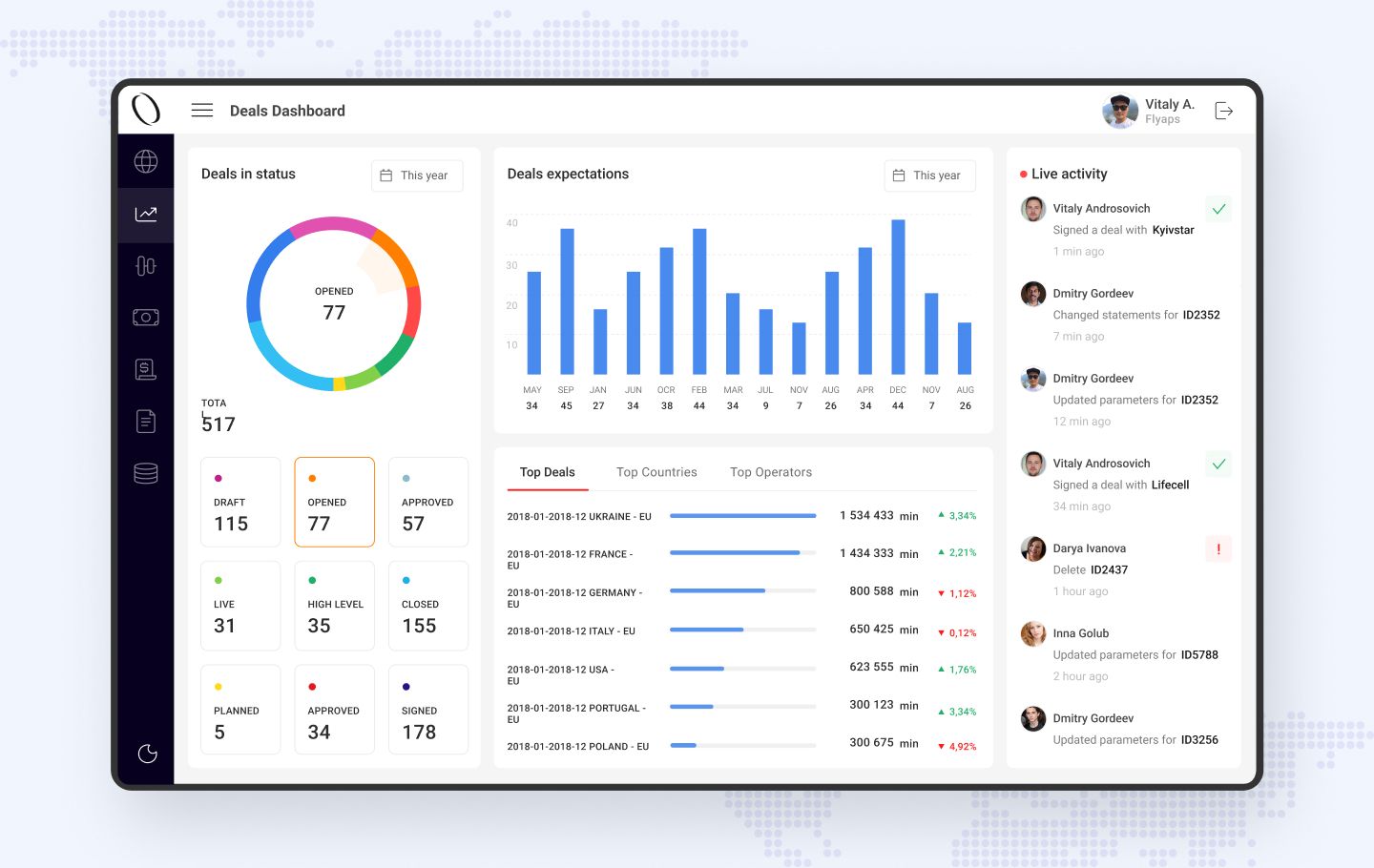
Yaana decided to dive into the European market. To do that, they acquired NeuString, a telecom startup that specializes in BI systems for roaming analytics targeted at mobile operators. The decision to acquire NeuString, though strategic, was faced with some challenges. The startup's desktop solution featured numerous disparate subsystems, required rebuilding to meet industry standards, current trends in telecommunications, and align with the evolving demands of European customers. Consequently, Yaana teamed up with Flyaps to replace the outdated system with a web-based, cloud-native solution and perform digital transformation.
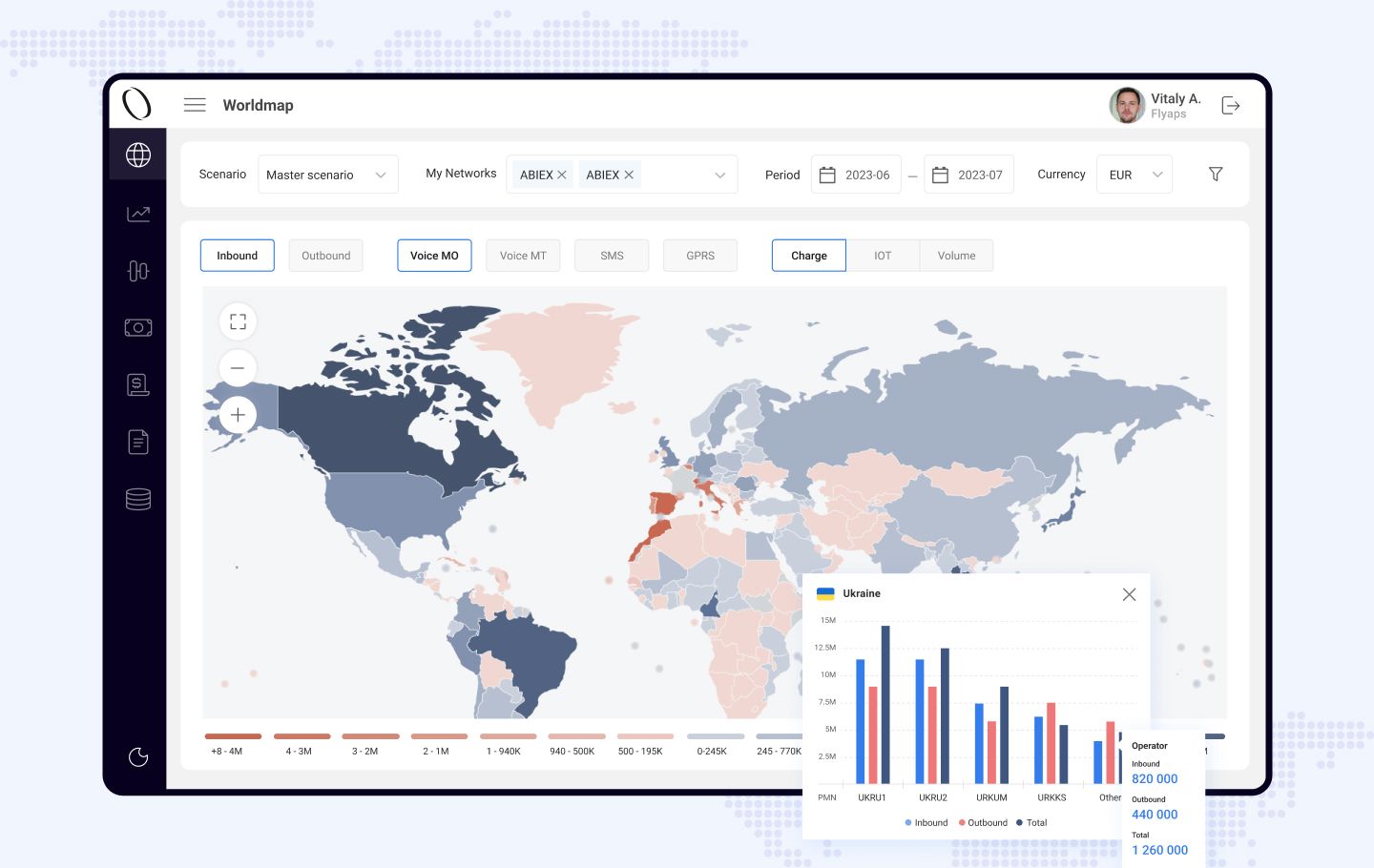
Despite the tight schedule, Flyaps promised to deliver the first working version in just four months, and pulled it off. Here's what we did.
We took the important features from the old system and moved it to the cloud. That allowed users to continue using the services they enjoyed, but now on an upgraded platform. In addition, we added advanced calculation and forecasting tools to help users budget better, create multiple budgets for comparison and plan like never before.
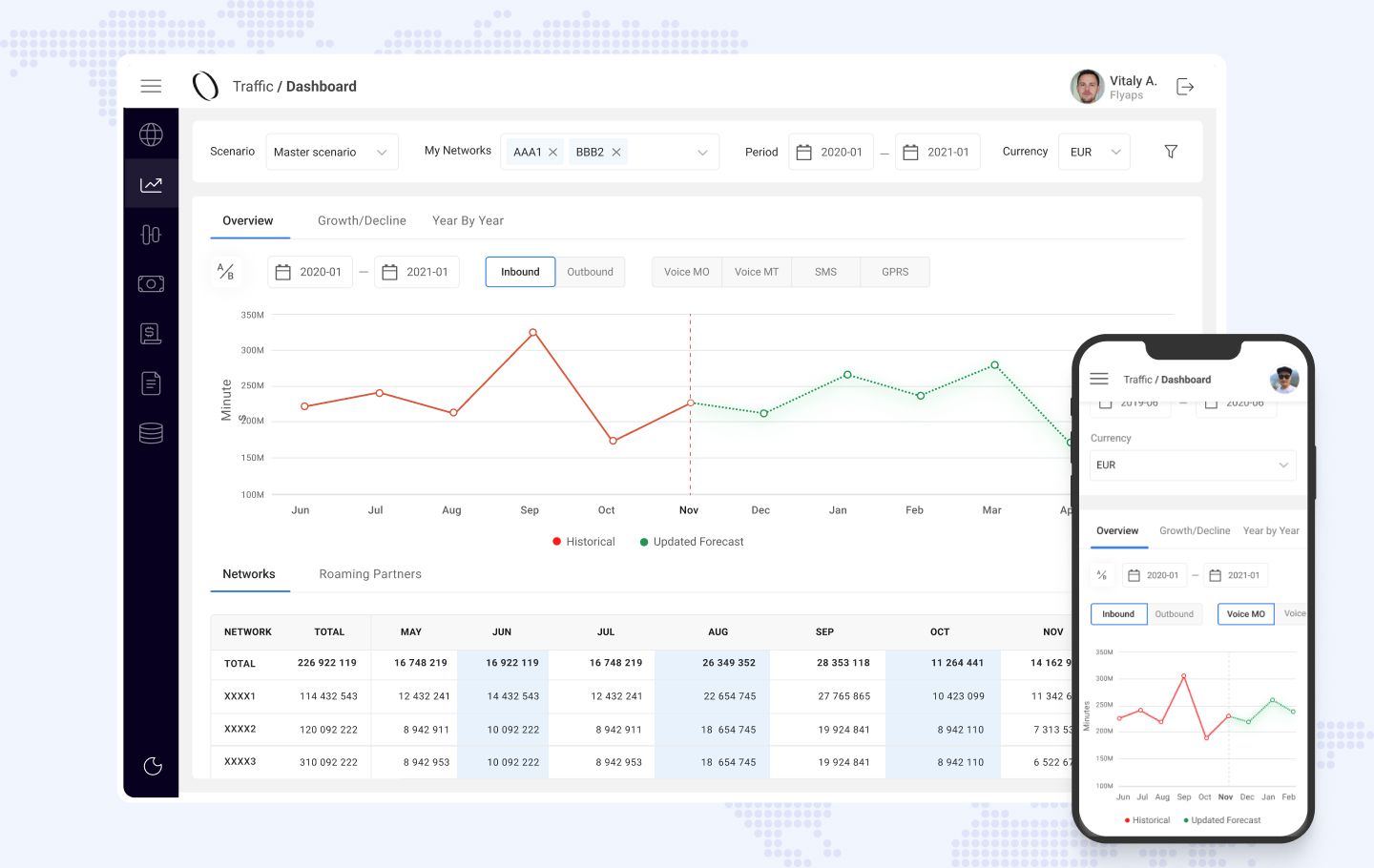
We made sure our cloud system worked in sync with the old on-premise one. We even set up dashboards that show data in a user-friendly way, including an interactive world map. These dashboards can tell you all about volume, charges, and insights, and you can sort them by country, time, or the type of service.
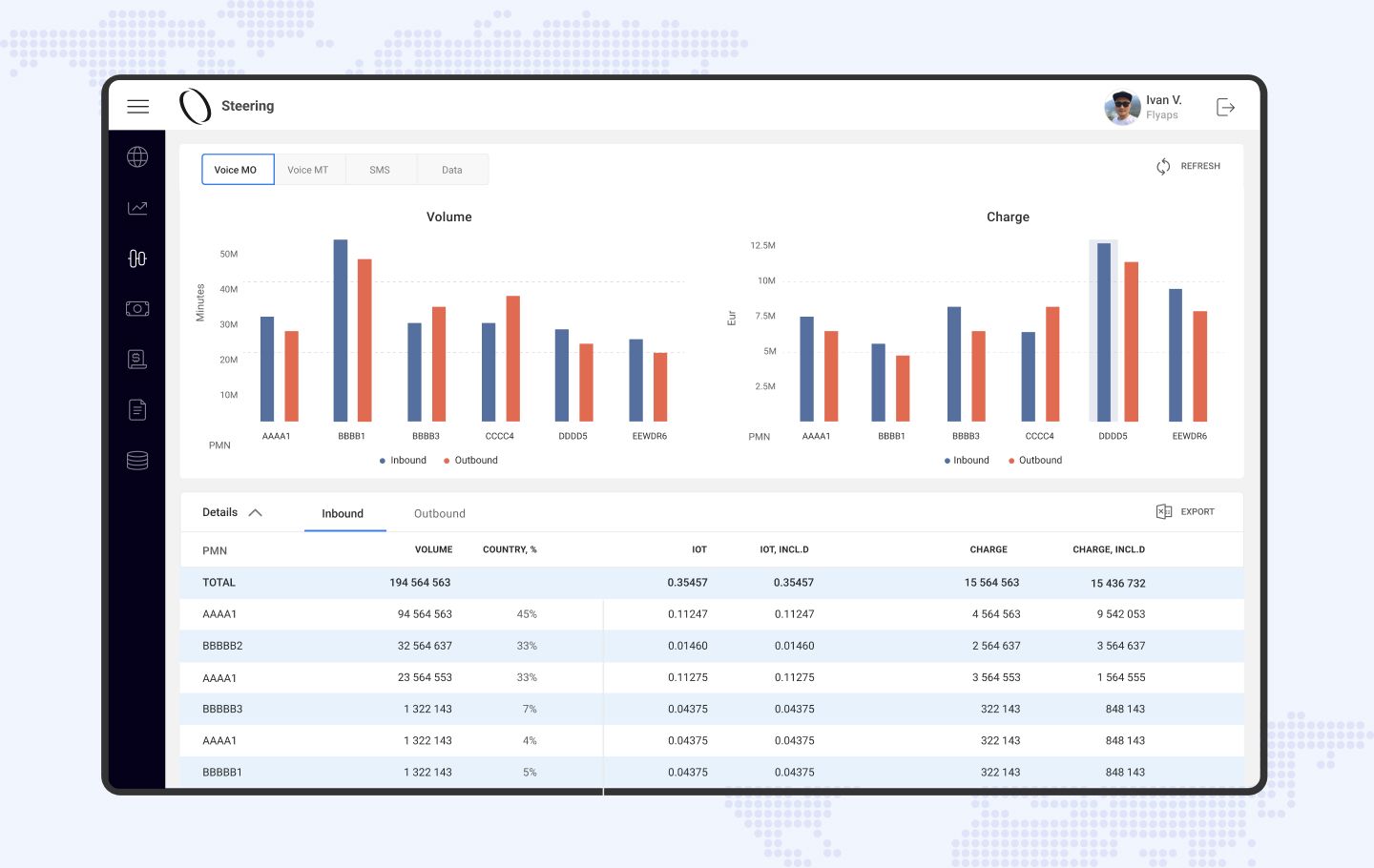
And we didn't stop there! We put a ton of effort into making the whole thing easy to use in terms of both look and feel. We followed all the latest design guidelines to make sure the system looks simple and pleasant.
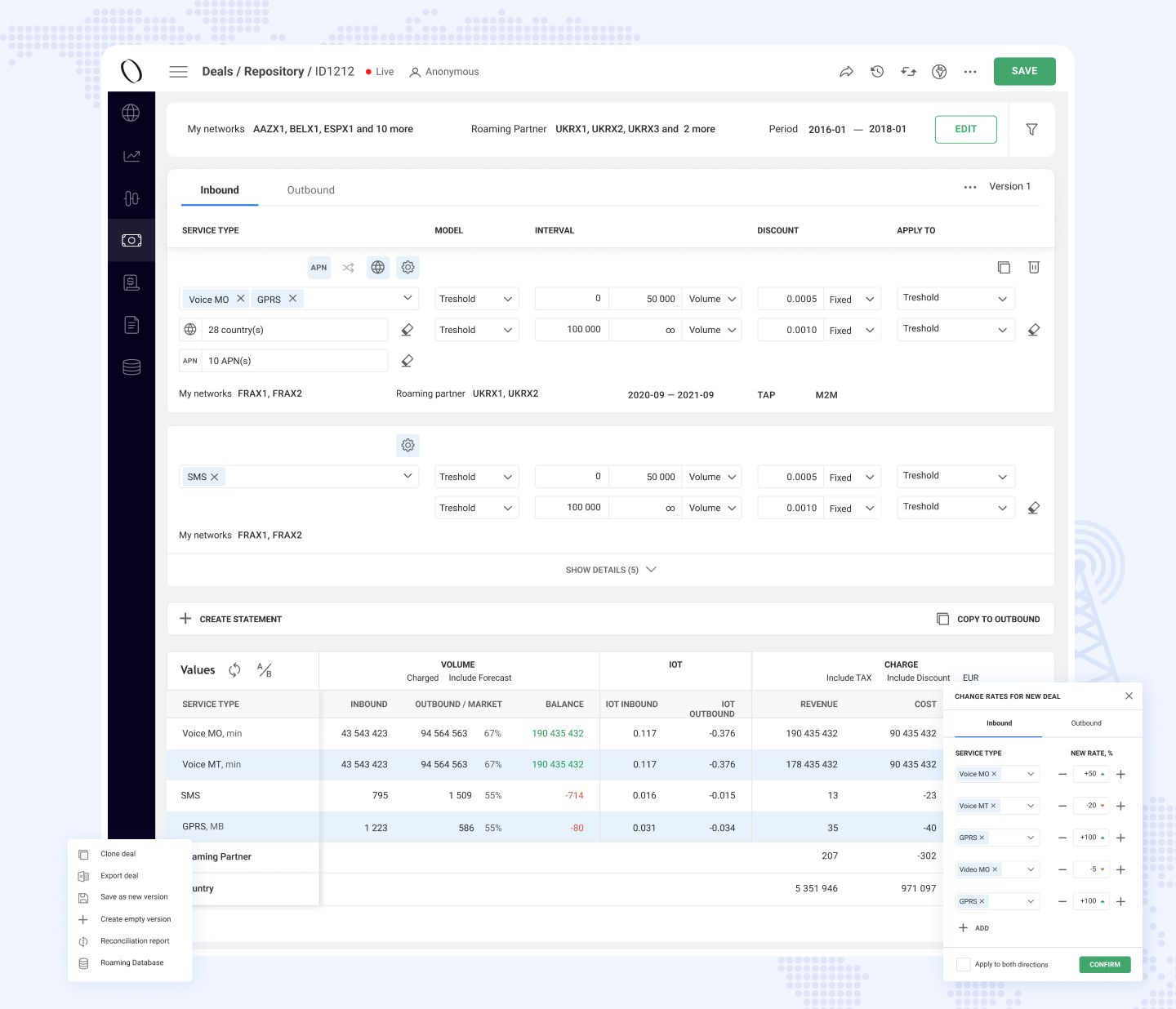
After successfully moving to the cloud, big companies like Orange Group and Hutchison 3G UK Ltd opted for Yaana’s new cloud-based system for forecasting, negotiations, budgeting, and data analysis. So overall, this telecom industry trend let Yaana Technologies gain a leading position on the European telecom market.
From cloud migration to telecom-specific AI solutions, we have delivered over 20 projects that are used by hundreds of MNOs and telecom companies worldwide. Check our capabilities and let’s discuss your next solution.
See our servicesInternet of things (IoT)
IoT in telecom is a network of interconnected devices and objects that can communicate and share data with each other over the internet. And here we are talking not just about phones or computers but also connected devices like smart watches, sensors, vehicles, and more.
The IoT market in telecom services is booming. In 2021, it was valued at roughly $17.4 billion. But experts are predicting that by 2031, it's going to skyrocket to a whopping $254.2 billion.
Automation
Business process automation in the telecom industry involves using technology to make routine tasks more efficient and enhance a company's overall performance.
The telecommunications industry has been a bit slow to jump on the tech bandwagon, but with the COVID-19 pandemic, it had to step up its game. In fact, a recent study by STL Partners found that about 70% of telecom companies they talked to are now looking for new ways to boost revenue. The study says that automation in the telecom industry is going to be crucial for all telecom providers, no matter what their strategy or business models are. Let’s take a look at why automation is becoming one of the biggest telecommunications industry trends.
Benefits of automation in the telecom industry
There are three main advantages of telecom automation:
- Efficient data flow: Imagine a telecom company struggling to gather and analyze customer data for better services. Automation can create a system that collects and organizes data from various sources automatically, like social media and call records. This speeds up data analysis, reduces errors, and enhances customer experience.
- Network monitoring automation: With the growth of IoT and 5G, traditional data collection isn't enough. Automation tools like artificial intelligence (AI) and RPA can monitor networks in real-time, detect issues, and take quick actions to ensure service quality.
- Enhanced customer experience: In telecom, problem resolution often takes too long, leading to customer dissatisfaction. Automation solutions like chatbots can quickly respond to common customer queries. They also help manage high volumes of emails efficiently. This results in faster problem resolution and increased customer satisfaction.
While automation itself is a significant telecom industry trend, it, in turn, comprises three main trends: the utilization of robotic process automation (RPA), low-code application platforms (LCAPs), and AI development platforms. Artificial intelligence capabilities extend well beyond automation, so we will delve into AI later in detail. For now, let's examine the first two trends.
Robotic process automation (RPA)
This innovation in telecommunications involves software bots that mimic human actions, such as data entry and calculations, to save time and minimize errors. RPA is beneficial for handling structured data and streamlining repetitive tasks.

For instance, imagine Stiven, a financial analyst dealing with numerous invoices daily. RPA software is introduced at her company to assist with these mundane tasks. The software bot swiftly captures data, performs calculations, and enters information into the system, all completed within seconds. This not only saves Stiven time but also ensures error-free data entry.
Low-code application platforms (LCAPs)
LCAPs are software tools that simplify application development by allowing developers to drag and drop pre-built components, reducing the need for extensive coding. These platforms automate various development processes, enabling companies to create and deploy enterprise applications quickly and efficiently.
Imagine you gave seasoned developers a complex project with a tight two-month deadline. Knowing the project involved extensive coding and testing, they proposed using LCAP to expedite development and reduce the amount of code required. With your approval, they got to work. Using LCAP, your developers built the application rapidly and automated repetitive coding tasks, such as validation and exception handling. Remarkably, they achieved this without compromising quality. In the end, you got a fully developed application within the deadline, and your team avoided burnout. A clear win-win situation.
The case of our client, NetSpark IP & Telecom, is a great example of how automating your key business processes can cut the time to finish projects in half.
Case in point: automating back-office tasks with custom CRM/ERP system
NetSpark IP & Telecom, a US-based telecom consulting company, used to handle most tasks manually. One major challenge they faced because of that was selecting the best tariff plans for their clients, which required the efforts of up to 10 employees on a single project.

As their business was rapidly expanding, NetSpark recognized the need for automations to streamline their processes. They explored ready-made automation solutions, but none of them quite fit their requirements. So, they decided to build a custom CRM/ERP system. However, they lacked the technical expertise to do it on their own, which is when they turned to Flyaps for assistance.
We didn't rush into action. Instead, we closely collaborated with NetSpark's leadership to create a detailed map of their business processes. Using this map, we devised a plan for the new system.
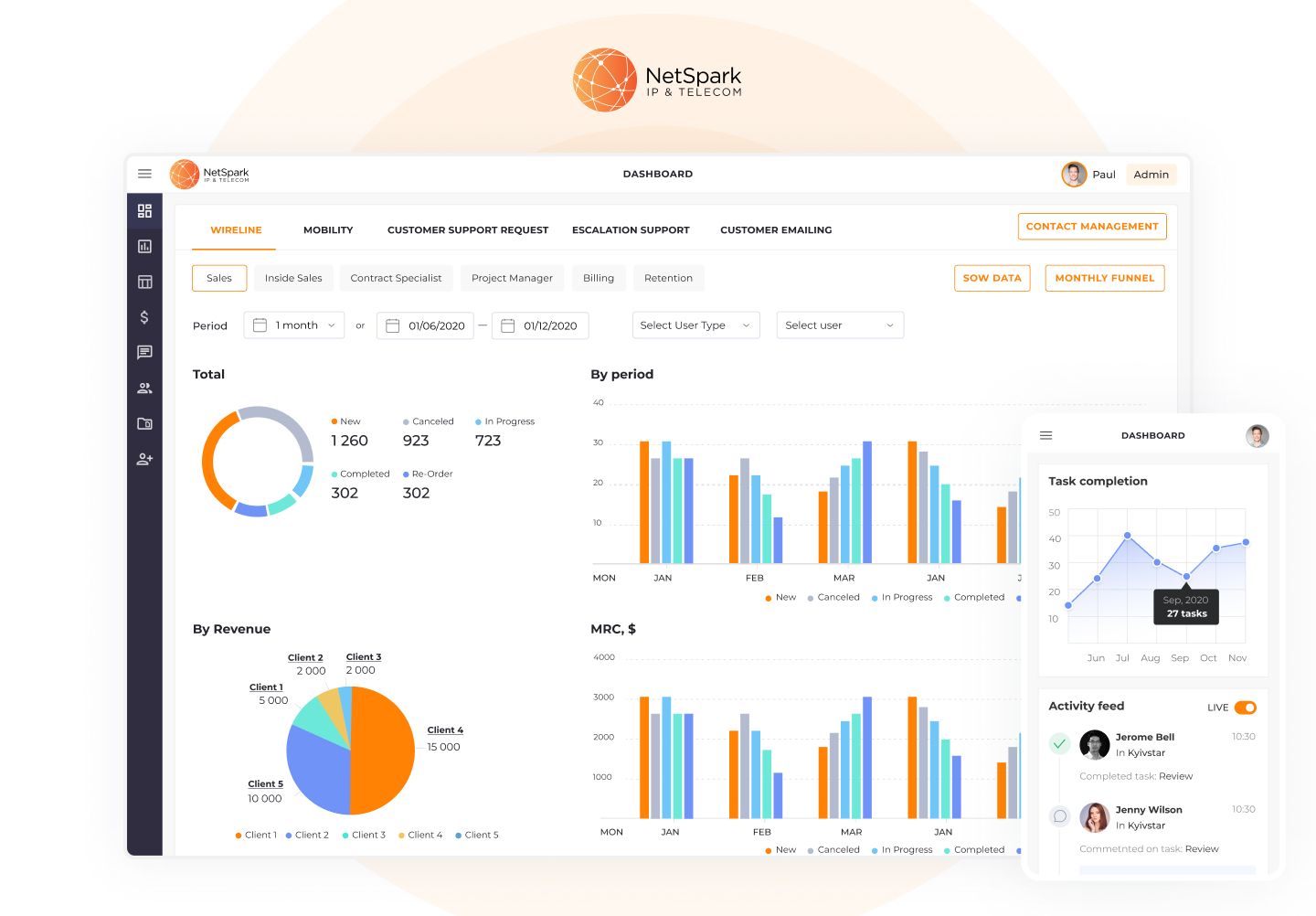
Then our DevOps engineer set up CI/CD pipelines to simplify and speed up the release process. This automation measure allowed the tech team to develop and update different parts of the software without any hiccups.
Considering NetSpark's diverse clients and employees, we ensured the system could be customized for various user types, granting access and permissions based on individual roles.
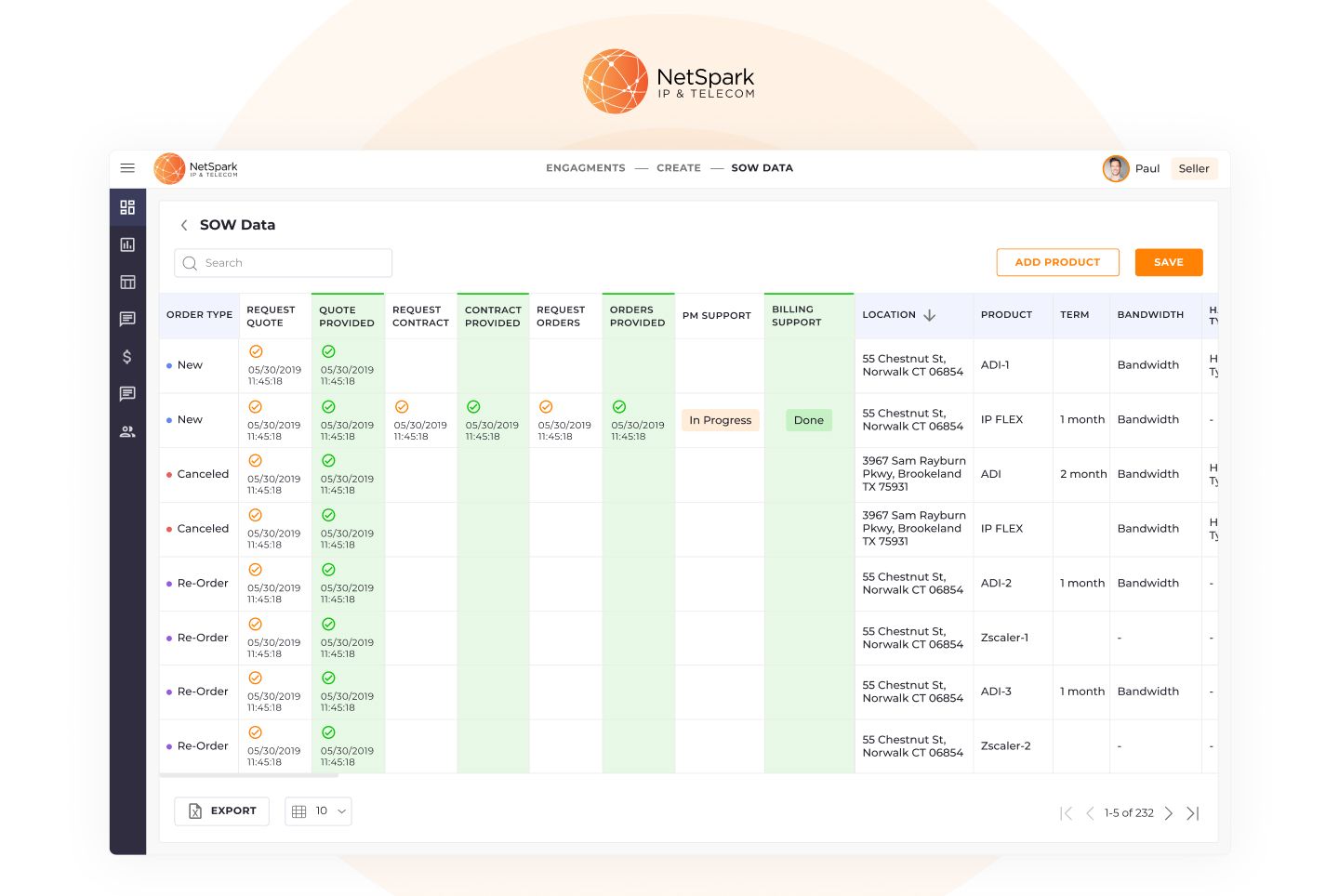
One of the system's critical components was an RPA-based calculation tool that rapidly determined the best tariff plans for clients, eliminating errors and significantly reducing the time required—from three days to just five minutes.
In just three months, the first version of the custom CRM/ERP system was all set for operation, aligning with the latest telecom industry trends.
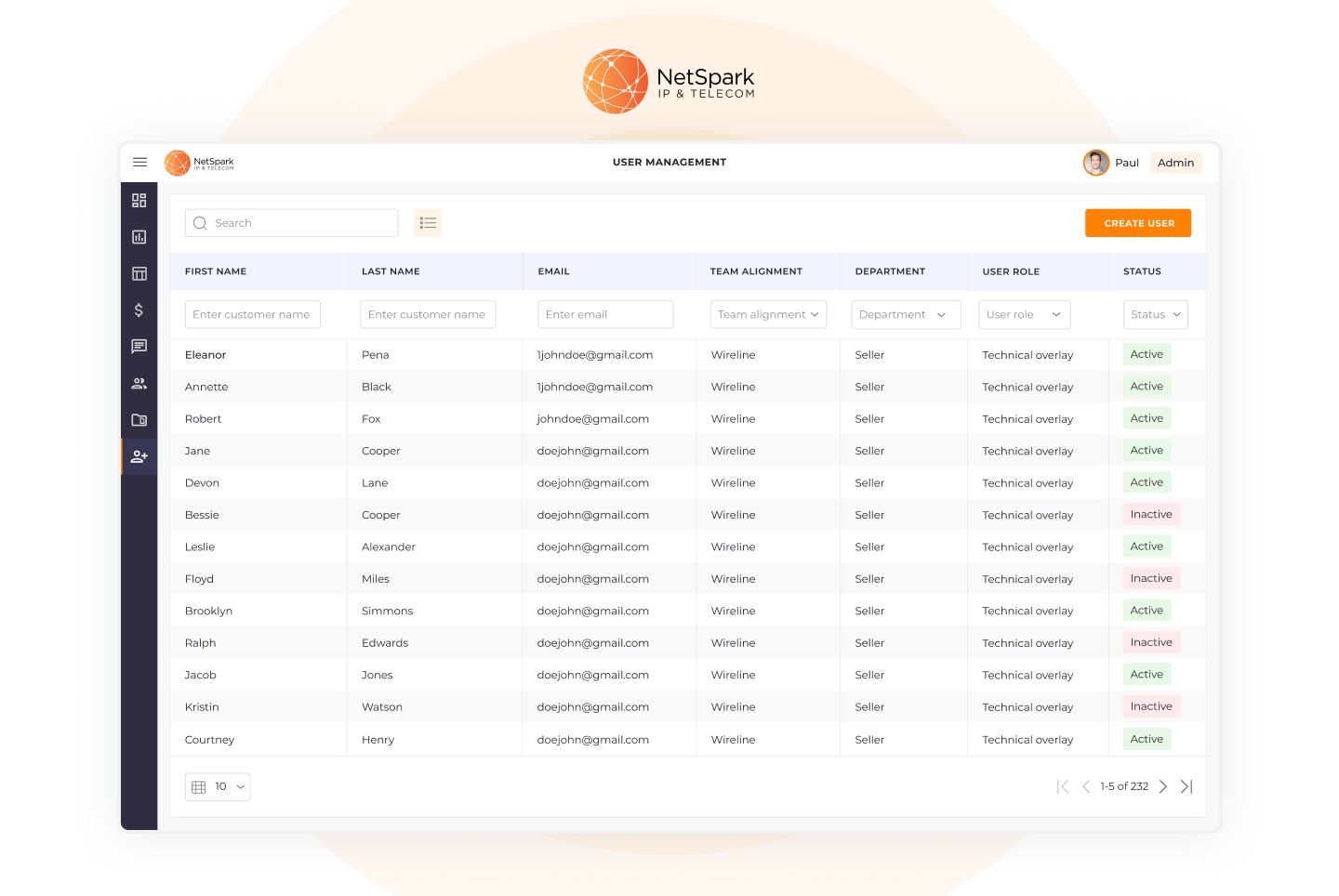
The results were impressive: when the system went live, NetSpark reduced the time required for implementing projects by half, enhancing the customer experience and leading to an increase in revenue.
Artificial intelligence (AI)
In 2022, the worldwide generative AI in the telecom market was worth about $150.81 million. But by the year 2032, it's projected to be worth a whopping $4,883.78 million. It's expected to grow at a rate of about 41.59% every year from 2023 to 2032. Artificial intelligence and defining the right generative AI roles became indispensable for telcos due to its analytic capabilities and ability to work with unstructured data (that doesn't have a clear structure, like text, images, videos, social media posts).
To fully leverage AI’s potential, telecom providers increasingly rely on advanced tools that simplify development, boost performance, and unlock new possibilities — some of the most effective options are highlighted in our article on the best AI tools for developers.
In 2022, the global generative AI market in telecom was valued at approximately $150.81 million, with projections reaching $4,883.78 million by 2032—growing at a staggering 41.59% annually. This surge underscores how indispensable artificial intelligence has become for telcos, particularly for its analytics capabilities and handling of unstructured data like text, images, and social posts. As the market expands, defining the right generative AI roles within telecom organizations will be crucial to successfully leveraging these technologies.
In the past, businesses used to rely on reports based on historical data and events that had already happened. But now, thanks to AI-powered analytics, telecom companies can have real-time dashboards and alerts that show them what's going on right now and how it might affect their future plans.
To learn how telecoms can strategically implement AI to maximize these benefits, check out our comprehensive guide on AI Implementation strategies.
Combined with RPA, AI also makes the repetitive and boring task of analyzing data much easier and faster. Instead of people spending hours sifting through data, AI algorithms can do it automatically. For example, they can look at revenue numbers and tell you about growth, trends, forecasts, and more.
Geographic information systems (GIS)
The geographic information systems (GIS) works by integrating various types of data that have a spatial component, such as maps, satellite images, survey data, and more, into a digital system. This data helps telecom companies enhance network design, optimize performance, and offer location-based services to customers. GIS aids in mapping existing network infrastructure and planning efficient expansion. It also helps identify network congestion and outages for improved service quality. Additionally, GIS assists in asset management, making maintenance more efficient and reducing the risk of network problems.

The global GIS market in the telecom industry made about $1,564.6 million in 2021. And it's expected to shoot up to $4,482.8 million by the year 2030. That's a pretty impressive growth rate of 12.4% each year from 2021 to 2030. This is happening mainly because there's a growing demand for setting up telecom networks and more and more people are using GIS technology to make mobile and broadband services better. So, it's not surprising that this market is booming.
Turkcell's adoption of GIS as a noteworthy example for telcos on how they can improve their planning. The technology allowed them to achieve an accuracy rate exceeding 80% in estimating subscriber uptick rates in new investment areas. Let’s see how it’s done.
Case in point: using ArcGIS technology for predicting customer demand
Turkcell, a digital operator based in Turkey, offers a diverse range of digital services and operates in multiple countries. For years, they had been assessing customer demand but sought a more nuanced understanding of future trends in telecommunications. They faced the challenge of consolidating vast amounts of data and transforming it into machine learning models to guide their sales and marketing teams effectively. In a nutshell, they wanted to create a unified tool for sales and marketing teams. The tool had to:
a) analyze historical data to forecast market growth in product types and locations;
b) utilize location intelligence for infrastructure expansion;
c) developing timelines for capital investment returns.
To address these challenges and enhance their capabilities, Turkcell turned to ArcGIS technology, employing tools like ArcGIS Pro, ArcGIS ModelBuilder, and machine learning techniques to develop the web application - GEDI. This involved integrating over 80 diverse data categories, including Ookla's speed test data and various datasets related to population, income, socio-economic development, regional statistics, and infrastructure. The team selected the XGBoost algorithm for its high accuracy and suitability for the data structure, improving data accuracy by resolving balancing issues. They created a grid of over 290,000 sections for precise insights, aiding in predicting demand locations and the time required to achieve specific product uptick targets.
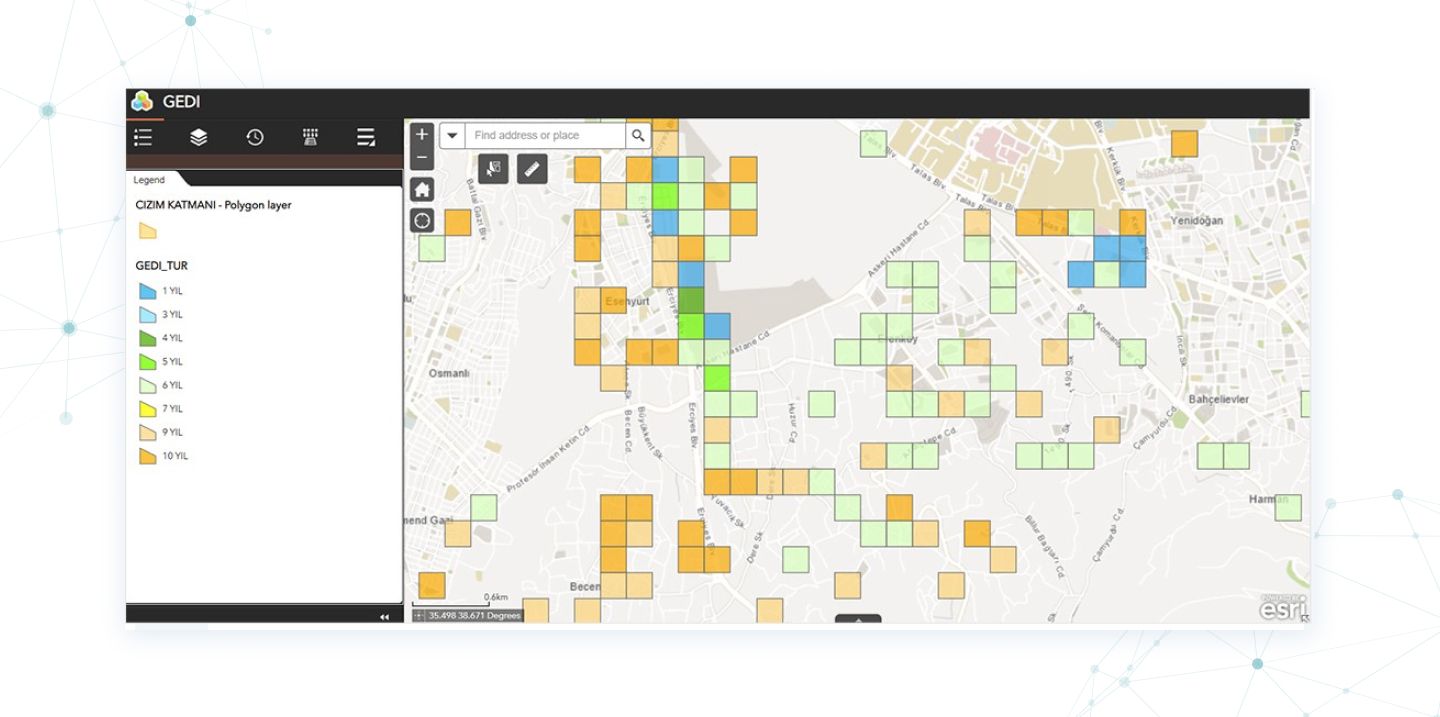
As a result, Turkcell's utilization of ArcGIS technology and location-based intelligence, combined with subscriber data, allowed them to estimate subscriber uptick rates in new investment areas. By incorporating 80 diverse data categories and applying machine learning, they achieved an accuracy rate exceeding 80%. This empowered Turkcell to refine its market strategy, optimize capital allocation for infrastructure expansion, and enhance the timing of these investments.
Cybersecurity
The global IT and telecom cybersecurity market was worth about $30.18 billion in 2021. It's expected to keep growing at a rate of about 12.1% every year from 2022 to 2030. That's happening because of the emerging technologies like cloud, IoT, and 5G. They've made processes easier and more automated in the telecom world, but at the same time, they've also made telcos more vulnerable to cyberattacks. Businesses now have to protect themselves from the new threats.
To stay safe, telecom companies invest in advanced security systems, privacy tech, and compliance measures. They also allocate resources for educating their employees about security, regularly audit systems for vulnerabilities, and use AI and machine learning for real-time threat detection. In the end, staying updated on security trends in telecommunications is crucial in this rapidly evolving industry.
Globe Telecom is a great example for other telcos how they can proactively enhance their cybersecurity posture by transitioning from traditional risk-focused models to a more agile, threat-based approach. Let’s take a look at their cybersecurity journey.
Case in point: enhancing cybersecurity with a threat-focused approach
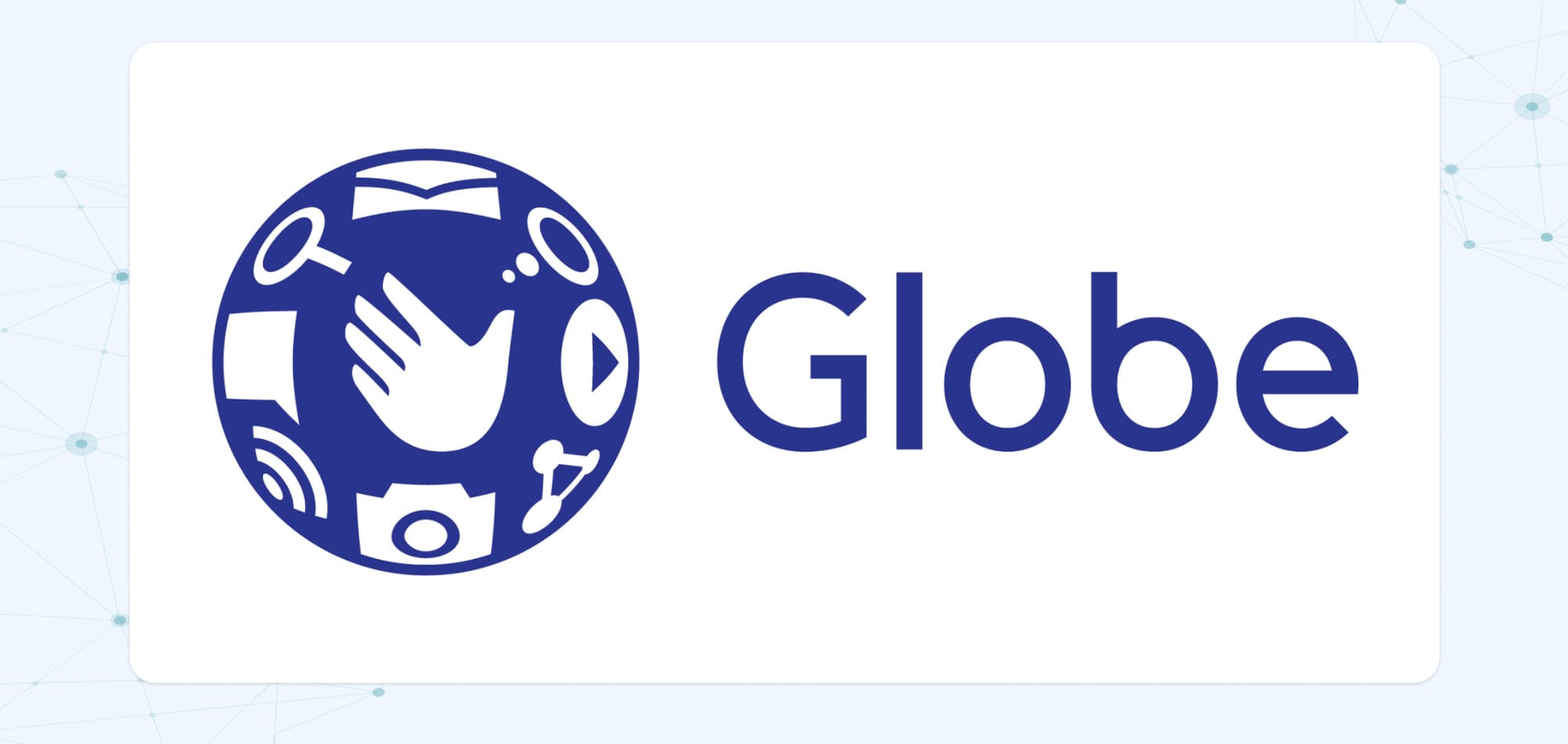
Globe Telecom is the Philippines' foremost telecommunications provider serving approximately 80 million customers. Previously adhering to a risk- and compliance-centric cybersecurity model, a common approach in the Asia-Pacific region, Globe Telecom's leadership recognized the need to pivot toward a threat-based strategy that aligns with evolving adversary tactics. In pursuit of this digital transformation, the company took several pivotal steps.
First, Globe Telecom established a cutting-edge Security Operations Center (SOC), a central hub for monitoring and responding to cybersecurity threats in real-time. Additionally, they streamlined various departments within their organization and substantially expanded their IT team, increasing its size by over 300%. This commitment to bolstering their IT and security infrastructure was underscored by a significant boost in capital expenditure (CAPEX).
Globe Telecom's choice of security partner, CrowdStrike, since 2016, played a pivotal role in their cybersecurity overhaul. They rapidly deployed the CrowdStrike Falcon® platform, with the initial phase completed within a single day — an astonishing 90% reduction in deployment time compared to their previous solution. Furthermore, Globe Telecom engaged with CrowdStrike Falcon® OverWatch, a team of skilled threat-hunting experts, to bolster their threat detection capabilities.
The results of this strategic shift were striking. Globe Telecom gained immediate visibility into their vast network, encompassing 17,400 endpoints, and identified threats that had previously gone unnoticed. Leveraging CrowdStrike's innovative CrowdScore feature, they could effectively prioritize and expedite their incident response efforts.
How Flyaps can help your telecom business embrace telecom trends and stay competitive
With over a decade of operating in the telecom world, we keep our fingers on the pulse, always looking at the latest telecom industry trends. This is why major players consistently choose us when they want to stay updated and embrace emerging technologies. Let’s look at three major reasons to work with Flyaps.
Custom IoT solution development
Our expertise lies in crafting personalized IoT solutions perfectly matching the unique requirements of telecom providers. Whether it's crafting M2M billing systems, building remote monitoring frameworks, or developing logistics applications, Flyaps excels in crafting tailor-made software that harmonizes with your corporate goals. Our process includes designing intuitive user interfaces, establishing robust data security protocols, and guaranteeing seamless compatibility across a spectrum of devices and systems. Additionally, we can facilitate the seamless integration of third-party IoT devices and APIs into your telecommunications solution.
Hybrid cloud fusion
Taking into account your telecommunications company's ecosystem strategy, budget considerations, and operational requirements, we can assist you in strategizing the optimal blend of private and public cloud resources. This approach will enable you to establish a versatile and expandable network infrastructure that aligns perfectly with your objectives.
Tailored automation blueprint
We understand the nuances of complex processes and the imperative for a unique touch in each telecom project we work on. Drawing upon our extensive expertise, our team is poised to aid you in optimizing your company's operational workflows. We achieve this by crafting a personalized automation strategy, reinforced by continuous support, to guarantee the successful execution of your automation initiatives.
Want to stay competitive in telecom? Get in touch to embrace top telecom trends and thrive in the telecommunications industry.
From cloud migration to telecom-specific AI solutions, we have delivered over 20 projects that are used by hundreds of MNOs and telecom companies worldwide. Check our capabilities and let’s discuss your next solution.
See our services
